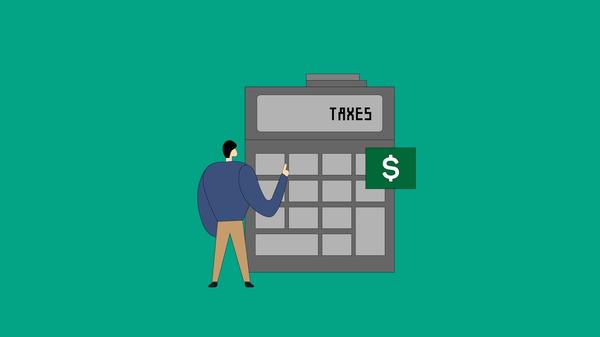With the current pandemic driving thousands to trading in the stock market, it is important to make informed decisions with your money. Exercising stock options can be complicated and can result in significant financial consequences. Here is a primer on understanding stock options and how to exercise them.
WHAT ARE OPTIONS?
Like stocks, mutual funds or ETFs, options are also another asset class, which offer many advantages that trading stocks and ETFs cannot. Options are termed as derivatives because they derive their value from an underlying asset. Therefore, a stock option is a derivative which derives its value from a stock.
An option is a contract giving the buyer the right, but not the obligation to buy or sell the underlying asset at a specific price (strike price) on or before a certain date.A stock option typically represents 100 shares of the underlying stock.
A call option gives the holder the right to buy a stock, whereas a put option gives the holder the right to sell a stock.The strike price is the price at which an option can be converted into 100 shares of stock if it is exercised in case of a call option and the price at which 100 shares can be shorted or sold in the case of a put option.
Example of Call and Put options:You buy a call option when you are expecting the price of the stock to rise and a put option when you expect it to fall.
Let us say that on August 1st, you bought one call option contract for Apple with a strike price of $405. The call option price is $46.80 with 37 days to expiration, and because each option allows you to buy 100 shares of the underlying stock, your total cost of buying this option is 100 x $46.80 = $4,680. The current market price for the stock is $449.94.
This means that the call option buyer has the right to convert his options contract into 100 shares of Apple at a price of $405 during the 37 days of the contract.
Similarly, let us say the put option is available at a strike price of $500 and an option price of $50 with 37 days to expiration. Thus, the total put option cost is 100 x $50 = $5,000. This means that the put option holder has the right to short or sell 100 shares of Apple stock at $500 during the term of the contract.
During the term of the contract, if the stock price rises, the value of the call option increases, whereas if it falls, the value of the put option increases.
WHAT DOES IT MEAN TO EXERCISE AN OPTION?
Remember, in options trading, the holder has the right, but not the obligation to buy or sell the underlying stock at a specified price on or before a specified date in the future.
An option holder is exercising an option if they decide to buy or sell the underlying asset instead of allowing the contract to expire or closing out the position, using their right. Therefore, let us consider the same Apple stock option example and see what it means to exercise a call or put option
- When a put option holder exercises the contract, he will sell 100 shares of Apple at the strike price ($500) within 37 days.
- When a call option holder exercises the contract, he will buy 100 shares of Apple at the strike price ($405) within 37 days.
Is Exercising a Stock Option the Best Idea?
Let us continue with the same Apple stock option example to understand if exercising it is a good idea or not.To reiterate the call option contract terms,
Strike Price = $405Current Stock Price = $449.94Time to Expiration = 37 daysCall Option Premium = $46.80
At first glance, you’re thinking there’s a huge difference between the strike price and the current market price, making it an obvious decision to simply buy the option and exercise it immediately to make a healthy profit. Let us explore how this pans out.
Total Call Option Cost = 100 x $46.80 = $4,680
By exercising the option, you are agreeing to buy 100 Apple shares at $405.
Total value of shares purchased = 100 x $405 = $40,500
By immediately selling your 100 shares in the open market at the current price of $449.94, you stand to gain $44.94 per share!
Profit from selling shares = $44.94 x 100 = $4,494
This is a sweet deal you think – but wait. This is a common mistake when trading options, where buyers forget to factor in the cost of the option itself.The total cost of buying the call option is $4,680, therefore instead of making a profit, you end up losing money by exercising your call option.
P/L = (P/L from Exercising the Option) – Total Option Cost
P/L = $4,494 - $4,680 = - $186
Thus, it may appear at first to be the profitable thing to exercise your option, but think hard before you jump in.
Calculating your Break-Even price
In the above scenario calculate the stock price at which you can exercise your option to break-even:
Break-Even = Strike Price + Option Premium + Commissions/Fees
Break-Even = $405 + $46.80 + Commissions/Fees = $451.80 + Fees
If the Apple stock rises to $451.80 it would be safe to exercise your option incurring no losses (this, excludes any commissions or fees. Make sure you factor those in)
Considerations before Exercising your Stock Options
- Type of Option: There are two types of options – American and European.American option contracts allow you to exercise them before the expiration date whereas European options may be exercised only after the expiration.Make sure you are aware of the contract guidelines.
- Tax Implications: Consider if there are any tax implications involved with exercising your stock options. For example, if an employee is cashing out on an ESOP, they will have to pay additional tax.
- Benefits vs Cost: Like the example we discussed earlier, if the cost of options outweighs the benefit of exercising it, the option is best left unexercised. Make sure you factor in the cost of buying the option along with any associated commissions or fees before you exercise the option.
Unexercised Stock Options
Majority of options are allowed to expire, rendered worthless or are closed out with opposing positions.For example, in the Apple call option example, let us say you bought the option at $4,680. Apple stock started rising in the following week, due to which the call option price also started rising and became $50.
In a week, you simply close out your position by selling your call option at $50 gaining $3.20 equivalent to a profit of 100 x $3.20 = $320
If the option is left unexercised, you lose the right to buy or sell the stock as well as the premium you paid to purchase the option along with any commissions or fees.
When is it Worth Exercising your Options?
- In case of a call option, if the strike price in addition to the option premium and commission is lower than the current stock price, it would make sense to exercise the option and buy the shares at a lower price and sell higher
- In case of a put option, if the strike price in addition to the option premium and commission is higher than the current stock price, it would make sense to exercise the option and sell the shares at a higher price and buy again at a lower price
- If you expect the company to announce a dividend, thereby offsetting your option premium and commission, it would be safe to exercise your option and buy the shares
Options trading can be complicated to understand at first, but it is used by various companies to hedge their positions and as a tool for risk management. It is important to educate yourself about all the pros and cons related to options and make an informed choice.


